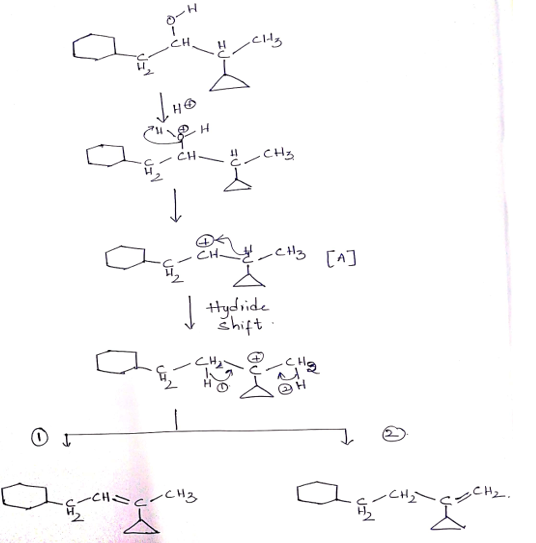Below is a schematic representation of possible reactions that Compound X can undergo. Use the scheme to answer the following questions A)Illustrating with reaction mechanisms, show how compounds [1], [2], [3] and [4] are formed. Image attached below
Below is a schematic representation of possible reactions that Compound X can undergo. Use the scheme to answer the following questions A)Illustrating with reaction mechanisms, show how compounds [1], [2], [3] and [4] are formed. Image attached below
Organic Chemistry: A Guided Inquiry
2nd Edition
ISBN:9780618974122
Author:Andrei Straumanis
Publisher:Andrei Straumanis
Chapter12: Chirality
Section: Chapter Questions
Problem 27CTQ
Related questions
Question
Below is a schematic representation of possible reactions that Compound X can undergo. Use the scheme to answer the following questions
A)Illustrating with reaction mechanisms, show how compounds [1], [2], [3] and [4] are formed.
Image attached below
![CH2
CH3
+
H2
[2]
[1]
[ A]
OH
CH
CH3
H2
Compound X
( ii )
[B]
CH3
CH3
[4]
[3]](/v2/_next/image?url=https%3A%2F%2Fcontent.bartleby.com%2Fqna-images%2Fquestion%2F5eceea66-02b3-43c1-a36b-b40c2b8f36f0%2Fbc47ed95-6953-444a-9034-2d1b0003f509%2F5vki2g_processed.jpeg&w=3840&q=75)
Transcribed Image Text:CH2
CH3
+
H2
[2]
[1]
[ A]
OH
CH
CH3
H2
Compound X
( ii )
[B]
CH3
CH3
[4]
[3]
Expert Solution
Step 1
Step 1:
B). The type of reaction involved in both (i) and (ii) is dehydration of alcohol (removal of a water molecule) to an alkene in the presence of a strong acid like sulphuric acid.
The only difference in both the reactions is the formation of carbocation and rearrangement of carbocation by hydride ion shift giving all four products. The reaction mechanism involved in the formation of products 1 and 2 is shown below.

Step by step
Solved in 2 steps with 2 images

Knowledge Booster
Learn more about
Need a deep-dive on the concept behind this application? Look no further. Learn more about this topic, chemistry and related others by exploring similar questions and additional content below.Recommended textbooks for you

Organic Chemistry: A Guided Inquiry
Chemistry
ISBN:
9780618974122
Author:
Andrei Straumanis
Publisher:
Cengage Learning

Organic Chemistry: A Guided Inquiry
Chemistry
ISBN:
9780618974122
Author:
Andrei Straumanis
Publisher:
Cengage Learning